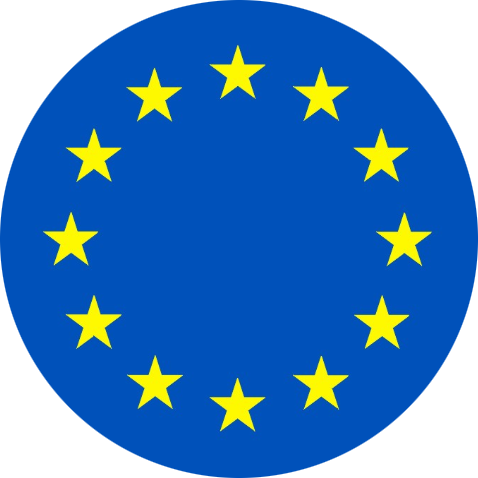December 2025
Please see below for a series of fixed income and currency macro viewpoints from Insight’s lead portfolio managers.
| Insight Spokesperson | Quote |
|
Peter Bentley
Global Head of Fixed Income  |
Wave of capital heading for credit markets as cash rates fade With money market fund balances having surged in recent years, the prospect of fading cash rates in some countries is likely to drive investors in search of higher returns, unleashing a significant wave of capital into credit markets. At the same time, the ongoing boom in AI infrastructure spending should see an increase in supply from companies seeking finance for the build out, which should help absorb some of this demand. This presents an opportunity for active fixed income investors to use detailed analysis to selectively access typically high-quality, low-risk debt from financially resilient issuers, and avoid potential losers who have become inappropriately indebted. Aside from this, emerging markets, particularly in regions like Latin America, are starting to look increasingly attractive, offering compelling opportunities that are insulated from global tariff uncertainty. In this dynamic landscape, adopting an active and globally diversified approach will be essential to fully capitalise on these evolving trends. |
|
Adam Whiteley
Head of Global Credit  |
The AI infrastructure build out is creating access to high-quality debt from issuers that rarely tap the market. Talk of an AI-driven stock bubble is growing, with echoes of the dot-com era. For equity investors, the risks are obvious - but fixed income investors have a different perspective. Surging AI capex is creating opportunities to access high-quality, relatively low-risk debt from issuers that rarely tap the market, often at a yield premium to similarly rated corporates. Unlike the dot-com era, today’s tech giants have diversified revenue streams and strong cash flows, anchoring their credit ratings. Even if AI ambitions fall short, repayment risk appears minimal. We’re positioning to take advantage, but rigorous, case-by-case analysis is essential given the wide variation in deal terms. |
| Erin Spalsbury Head of US Investment Grade Credit  |
Still no signs of a year-end slowdown: Credit markets are hot and we're actively hunting down value. Supply has been surprisingly strong - running at around 70% above typical levels for this time of year - yet credit spreads have only widened modestly. This resilience underscores still robust demand, which has absorbed elevated issuance with relative ease. While supply would normally taper off heading into year-end, some issuers may accelerate early-2026 funding plans if they sense continued investor appetite. Sentiment remains supported by solid corporate earnings; however, when companies miss expectations, spreads are punished disproportionately, highlighting investors’ willingness to retreat quickly from perceived weakness. We're closely monitoring year end activity as primary issuance in lower liquidity conditions could create interesting opportunities. |
|
Nate Hyde
Senior Portfolio Manager  |
Periodic bouts of volatility in 2026 should allow patient risk-takers to sift opportunities from increased dispersion. Heading into 2026, we expect elevated volatility and persistent government policy risks to remain key themes. Uncertain trade policy in the US, relaxed fiscal rules in Europe and continued divergence from global trends in Japan is likely to drive global bond market dispersion. In this environment, we are selectively increasing exposure to higher-quality, more liquid government-related credits - aiming to capture attractive spreads while maintaining prudent risk management. Patience will be critical: we intend to stay positioned to capitalise on opportunities that arise from widening dispersion during periods of volatility in the year ahead. In our view, active management is well placed to turn these market challenges into potential sources of outperformance. |
| Brendan Murphy Head of Fixed Income  |
Exceptional cycle sees Fed cut rates while inflation runs high It’s highly unusual for the Federal Reserve to be cutting rates with inflation still running well above target. Historically, the Fed has only eased policy once price pressures were firmly under control. Today’s backdrop, where inflation remains stubbornly elevated while growth and labour markets soften, underscores just how exceptional this cycle is. The Fed is clearly betting that further weakness in employment and the transitory nature of tariff-driven price increases will ultimately bring inflation downwards. |
| Rodica Glavan Head of EM Corporate Fixed Income  |
EM propelled by structural and fundamental tailwinds Amid a challenging global backdrop this year, EM asset classes have outperformed their developed market peers, underpinned by fundamentals that proved far more resilient than anticipated. We believe this strong momentum can extend into 2026, supported by a confluence of structural and fundamental tailwinds: a ten-year high in the EM-DM growth differential, the end of USD strength, relatively stable global trade and the return of inflows into the asset class. We are particularly constructive on EM corporates, where robust fundamentals - such as solid earnings and low leverage - have driven upgrades to outpace downgrades for the first time in years. Default rates have normalised closer to developed market high yield levels, and net issuance is expected to remain negative for the fifth consecutive year. |
| Gareth Colesmith Head of Global Macro Research  |
French asset underperformance could continue after a brief respite In France, a fragmented political landscape and fiscal strain have created a volatile mix. Legislative gridlock means we can expect only temporary stability until the 2027 presidential election sets a clearer future course. Against this backdrop, there is a possibility of further credit rating downgrades, and there is already evidence of cautious investors reducing their thresholds for French holdings. France retains considerable strengths: it is highly unlikely to default or restructure its debt, or to leave the euro. But active investors with shorter-term horizons may wish to consider alternatives to French government bonds over the next few years. We continue to underweight French government bonds in our active global fixed income portfolios in anticipation of further volatility ahead. |
| Harry Jones Portfolio Manager  |
Relative value trades appear more attractive than outright duration bets in the current market environment. The recent rally in government bond markets has pushed valuations back to levels approaching fair value. As a result, our strategy has shifted toward relative value opportunities rather than outright duration bets. This includes both yield curve positioning and cross-market trades. For instance, in the US, we favour the short end of the curve, which we expect to benefit from future US rate cuts. At the same time, in global portfolios that have sufficient flexibility, we have established relative value positions between Latin American bonds and US Treasuries. |
| Rob Gall Head of Market Strategy  |
Shift to short-term gilt issuance continues apace Gilts and sterling strengthened directly after the Budget, with gilts driven mainly by the DMO’s changes to issuance rather than the content of the budget itself. 30-year gilts benefited from cancelled auctions for long maturity gilts. While the fiscal rules are technically met, and headroom projected at around £22 billion in five years, the Chancellor’s plans rest on optimistic forecasts. Tax thresholds will remain frozen until 2031, pulling more workers into higher-rate bands over time. A crackdown on fraud is expected to raise £10 billion by 2030, and ‘efficiencies’ are forecast to deliver £4.9 billion by 2031 - targets that look neat on paper but will be hard to realise. The switch to a single assessment by the OBR each year may ease some of the pressure on the fiscal rules but backend loading policy changes does not deliver structural strength, so gilt volatility, particularly if growth remains lacklustre in the months ahead, remains likely, which could present opportunities. It's notable that the government has changed the profile of its issuance, shifting to cost-effective shorter tenors. The downside of this is the need to refinance more often, with significant refinancing issuance needed in 2027/28. The DMO and HMT will also launch a consultation in January 2026 on expanding and deepening the Treasury bill market, a welcome development but another switch shorter in issuance. |
| Francesca Fornasari Head of Currency  |
Sterling needs positive news on growth to outperform European peers Sterling enjoyed a relief post budget. Ultimately it was always hard to see how anything could be worse than the constant speculation in the run up, and a huge amount of bad news was already priced into markets. Looking forward, we’re likely to need some positive news on growth for Sterling to outperform its European peers. We continue to favour Scandinavian currencies over Sterling given a more robust economic outlook and prudent central bank policy. |
|
Jos Vermeulen |
A huge opportunity for the UK is still up for grabs Treasury forecasts issued on the day of the UK’s budget show the UK is overlooking a major chance to boost growth, support businesses and millions of people, generate significant tax revenues, and strengthen long-term gilt market stability. The government’s policy to unlock surpluses in defined benefit (DB) pension schemes could achieve much more. There is an estimated £200 billion sitting in these surpluses, yet the Treasury expects taxes of only £500m from surplus release over the next five years-startlingly low, in comparison to a potential tax take of £50bn. There has been progress-the decision to permit cash payments to pensioners and grant pre-1997 indexation in the PPF are positive steps. But the fix that would truly unlock this opportunity is simple: increase PPF protection to 100% for DB schemes that follow regulatory investment guidelines. This would give trustees complete confidence that members’ pensions are secure-even in a worst-case scenario. With these recent changes, the step to full PPF protection is even smaller, and the costs and risks would be far outweighed by the benefits. It's time to think bigger. |
| Jeff Burger Senior Portfolio Manager  |
Investors are locking in the long end of the muni curve, with spreads still well above the 10-year average. Municipal bonds posted one of their strongest Octobers in recent memory, fuelled by a sharp rally at the long end of the curve as investors seized attractive relative value and locked in yields amid persistent macro uncertainty. We believe the opportunity remains compelling: the spread between 2 year and 30-year maturity yields is still well above its 10-year average, and the technical backdrop remains supportive with demand outpacing supply. With municipals offering a tax-equivalent yield near 6%, their income potential rivals that of high-yield corporates - yet with a fraction of the risk. We’re positioning portfolios to capture value at the long end, aiming to optimise yield while preserving downside protection in a market where active management can truly make the difference. |
| Paul Benson Head of Systematic Fixed Income  |
Structural shifts have transformed high yield into a more resilient, lower-risk source of returns. Structural improvements in high-yield markets have fundamentally changed the risk profile of the asset class, making historical spread comparisons misleading. Today’s issuers exhibit resilient balance sheets. Default rates are near historic lows, particularly in the US, where the proportion of the universe in the highest quality segment, those carrying a BB rating, has climbed steadily for the past ten years. Importantly, average duration has also shortened significantly. These shifts mean high yield no longer carries the same equity-like beta it once did, offering a more resilient return profile. |























